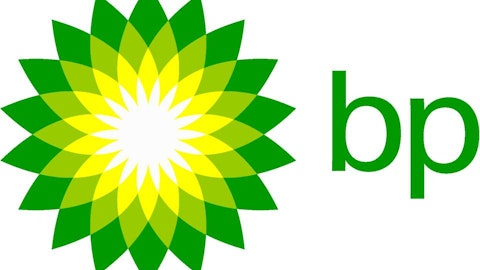A recent study conducted by the U.S. State Department found that the potential environmental risks associated with the proposed Keystone XL pipeline are not as grave as some have suggested and that its construction would have only a relatively minor impact on the future pace of development in Canada’s oil sands.
To readers who may be inclined to dismiss such concerns as the musings of a bunch of paranoid environmentalists, you may want to think again. That’s because these views have been backed up by academic research, which argues that Keystone XL’s environmental risks may be far more serious than its operator, Canadian midstream giant TransCanada Corporation (USA) (NYSE:TRP), would suggest.
Academic study suggests Keystone spill frequency much higher than estimated
An analysis carried out by John S. Stansbury, a civil engineering professor at the University of Nebraska-Lincoln, argues that the worst-case scenarios for potential spills arising from Keystone XL have been grossly underestimated by TransCanada.
According to TransCanada Corporation (USA) (NYSE:TRP), expanding Keystone would lead to only 11 major spills – defined as spills that result in the loss of more than 50 barrels of crude oil, or 2,100 gallons – over a 50-year time period. But Stanbury concludes that a more realistic estimate would be 91 major spills, after he found “flawed and inappropriate assumptions” in the methods TransCanada used to come up with its estimates.
Potential flaws in TransCanada’s estimates
One particular assumption in TransCanada Corporation (USA) (NYSE:TRP)’s methods that Stansbury found especially flawed was the omission of spills arising from “other causes.” According to Stansbury, these types of spills, which arise from unidentifiable causes, account for nearly a quarter of total spills. So by leaving them out, TransCanada derived potential spill estimates that are skewed heavily downward, he suggests.
Stansbury also took issue with TransCanada Corporation (USA) (NYSE:TRP)’s treatment of the impact of using modern pipeline construction and materials, which the company reckoned would reduce its expected spill frequency by half. Given that Keystone would transport diluted bitumen – a relatively corrosive substance – at greater pressure and higher temperatures than typical pipelines, Stansbury found no justification that modern construction materials would reduce the expected frequency of a leak by half.
Stansbury also suggested that TransCanada had greatly underestimated the amount of time it would take to shut down the pipeline in the event of a leak occurring near an environmentally hypersensitive point such as a river crossing. He calculates that the amount of time taken to close off the pipeline under such a circumstance could be 10 times longer than TransCanada has estimated – a conclusion with dire consequences for the nearly 2,000 rivers in six states that the proposed Keystone pipeline would cross.
TransCanada responds
As expected, TransCanada Corporation (USA) (NYSE:TRP) has issued a rebuttal, which categorically denies the concerns Stanbury raises. With respect to the professor’s assertion that Keystone is more susceptible to corrosion and his characterization of river crossings as “especially vulnerable” points along the pipeline, TransCanada responds with a two-pronged refutation.
First, the company claims that Stansbury’s suggestion that “the pipeline is susceptible to high rates of corrosion because it is below ground,” which he referenced by citing a 2006 paper by DNV Consulting, is flat out wrong. The company writes: “Nowhere in the 2006 DNV document cited is there any suggestion that buried pipe at river crossings is more vulnerable to corrosion than any other portion of the buried pipeline. Nor is there any support for the statement in the summary about relative operating pressure at river crossings increasing susceptibility to corrosion.”
The rebuttal then goes on to list the extra precautions with respect to corrosion protection and inspection that the company is taking to ensure greater safety. TransCanada writes:
Keystone employs an approach to corrosion protection that has virtually eliminated failure due to external corrosion in the 30‐plus years it has been in use. It includes fusion bond epoxy coating (FBE) coupled with active cathodic protection, which places a small current on the pipe preventing loss of metal due to corrosion. Keystone also will be inspected more frequently than standard regulations require, to ensure the effectiveness of this system.
Subsequent pages of TransCanada’s rebuttal follow a similar tone, highlighting what it believes are erroneous claims in Stansbury’s report and then attempting to disprove them. In the interest of time, I won’t go into further details but you can check out the full rebuttal here.
Who’s got it right?
As an outside observer, it’s difficult to figure out who’s right in this debate. While Stansbury presents a convincing case that the number and severity of potential spills from the Keystone XL pipeline have been misrepresented, TransCanada Corporation (USA) (NYSE:TRP)’s rebuttal is also persuasive.
What often gets lost in the details, however, is the fact that Keystone XL is relatively insignificant in the grander scheme of things. If constructed, the 1,179-mile pipeline would account for just over 2% of the total 55,000 miles of crude oil trunk lines currently traversing the country. And though its proposed capacity is much higher than the vast majority of current pipelines, it’s still a relatively minor share of the nation’s total pipeline capacity.
According to the Association of Oil Pipe Lines, interstate pipelines transport an unfathomable 11.3 billion barrels of petroleum every year. That works out to an average of about 31 million barrels per day. By comparison, Keystone XL has a targeted capacity of 830,000 barrels per day, which would account for just under 3% of existing total pipeline capacity for petroleum products.
Final thoughts
Regardless of who will ultimately be proved right, there’s one thing I do know – the operators of these projects are human beings who are fallible just like the rest of us. Despite the most stringent of precautions, unexpected events occur all the time. People make mistakes, equipment fails, pipelines rupture, and our planet ends up bearing the consequences.
For instance, consider the infamous 2010 BP plc (ADR) (NYSE:BP) Deepwater Horizon disaster, which killed eleven workers and discharged nearly 5 million barrels of oil into the Gulf of Mexico after a well blew out, leading to a fire and subsequent explosion aboard the Deepwater Horizon rig.
Though the two other parties involved in the accident – Transocean LTD (NYSE:RIG), which built and staffed the rig, and Halliburton Company (NYSE:HAL), an oil-field services firm that was in charge of cementing and monitoring the well – continue to blame each other and BP, the accident serves as a sobering reminder that things can and do go wrong, despite the involvement of some otherwise highly proficient companies.
There’s no reason to believe that TransCanada, despite the elevated safety measures it has proposed, will be immune from such events.
The article Has Keystone XL’s Environmental Impact Been Understated? originally appeared on Fool.com and is written by Arjun Sreekumar.
Fool contributor Arjun Sreekumar has no position in any stocks mentioned. The Motley Fool recommends Halliburton. The Motley Fool owns shares of Transocean.
Copyright © 1995 – 2013 The Motley Fool, LLC. All rights reserved. The Motley Fool has a disclosure policy.


